Ah, the joy of watching a puppy’s playful spirit come to life as they romp around with their favorite home toy. It’s a delightful sight that warms the heart and brings endless entertainment. But what makes these toys so captivating for our furry companions? Let’s delve into the world of puppies’ home toys and uncover the benefits that keep them entertained and engaged. From durable materials to interactive features, we’ll explore the top features to look for in these delightful playthings. And for those who are still scratching their heads about the best options, we’ve compiled a list of our top picks, showcasing the best puppies’ home toys on the market. Plus, we’ll guide you through choosing the right size and material for your pup, ensuring longevity and safety. To give you a glimpse into the real-world experience, we’ve gathered customer testimonials that share what other pet owners are saying about these must-have toys. Get ready to elevate your pup’s playtime with these insights and expert recommendations.
Discover the Perfect Home Toy for Your Pups
Finding the perfect home toy for your adorable puppies can be a delightful adventure, filled with excitement and the promise of endless fun. Imagine a cozy corner in your home where your furry friends can play, explore, and enjoy hours of entertainment. In this guide, we’ll delve into the world of puppies’ home toys, helping you discover the ideal playthings that will keep your pups engaged and happy.
When it comes to selecting a home toy for your puppies, it’s essential to consider their size, breed, and play style. Puppies come in all shapes and sizes, and what works for a tiny Chihuahua might not be suitable for a large Golden Retriever. By understanding your puppy’s preferences and needs, you can find a toy that not only entertains but also promotes healthy development.
One of the first things to consider is the type of toy that appeals to your puppy’s natural instincts. Puppies are curious creatures, and toys that mimic the world around them can be particularly engaging. Think about toys that resemble bones, balls, or even toys that encourage your pup to dig and search for hidden treats. These types of toys can help satisfy your puppy’s urge to chew, chase, and explore.
Durability is another crucial factor. Puppies are notorious for their playful yet destructive nature. A toy that can withstand the rigors of puppy play is a must. Look for toys made from sturdy materials like natural rubber, heavy-duty plastic, or sturdy fabrics that can stand up to sharp puppy teeth and aggressive play.
Safety is paramount when choosing a home toy for your puppy. Ensure that the toy is free of small parts that could pose a choking hazard, and that there are no sharp edges that could injure your furry friend. Toys with removable parts should be securely fastened to prevent any loose pieces from coming off during play.
Interactive toys can be a fantastic way to keep your puppy’s mind active and engaged. These toys often come with puzzles or treat dispensers that require your puppy to use their problem-solving skills to get to the reward. Not only do these toys provide mental stimulation, but they can also help prevent boredom and destructive behavior.
For puppies that are more active and energetic, a durable tug-of-war rope or a sturdy chew toy can be a great addition to their home toy collection. These types of toys allow your puppy to exercise their jaw muscles and provide a healthy outlet for their boundless energy.
When it comes to the size of the toy, it’s important to choose one that is appropriately sized for your puppy. A toy that is too large can be ignored, while one that is too small can be a choking hazard. Measure your puppy’s mouth and body to find a toy that fits comfortably in their mouth and is large enough to prevent them from swallowing any parts.
Another consideration is the scent of the toy. Many puppies are attracted to toys that smell like their human companions. You can even use a cloth with your scent on it to tie around a toy, making it even more appealing to your pup.
In addition to physical play, you might want to consider toys that encourage social interaction. A plush toy with a squeaker can be a great way to mimic the sounds of other animals or even people, helping your puppy to develop their social skills.
Lastly, don’t forget about the importance of variety. Puppies can get bored with the same toy after a while, so having a selection of different toys can keep their playtime fresh and exciting. Rotate your puppy’s toys regularly to keep them engaged and to give each toy a fair chance to be loved.
In conclusion, finding the perfect home toy for your puppies is about understanding their unique personalities and needs. By selecting toys that are safe, durable, and engaging, you can create a play environment that is both fun and beneficial for your furry companions. So, go ahead and explore the vast array of home toys available, and watch as your puppies enjoy hours of play and the comfort of their own little play haven at home.
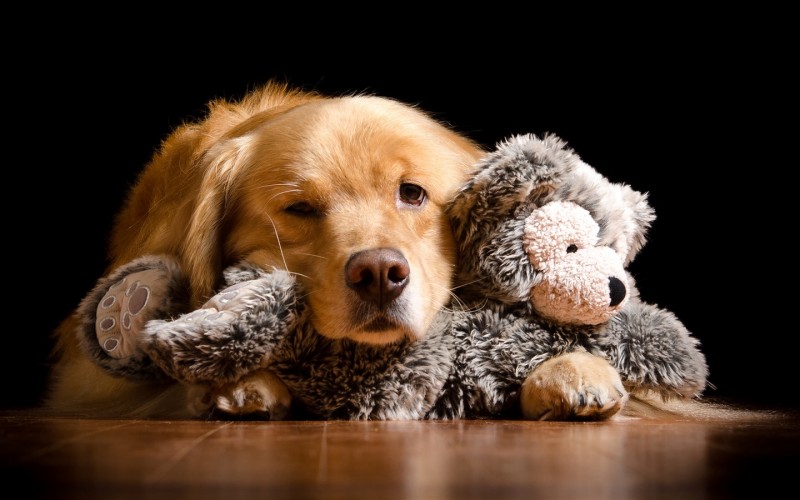
Why Puppies Love Home Toys: The Benefits Explained
Puppies have a natural inclination towards play, and their fascination with home toys is undeniable. These delightful companions find numerous reasons to adore their plush playthings, and here’s why:
-
Stimulation of Curiosity: Puppies are born with insatiable curiosity, and home toys provide the perfect outlet for them to explore and discover new objects. From the textures to the sounds, each toy can spark their imagination and keep their minds engaged.
-
Physical Exercise: Playtime with home toys is an excellent way for puppies to get the physical activity they need. Tugging, chewing, and chasing after their toys help them stay fit and healthy, reducing the risk of obesity and other health issues associated with a sedentary lifestyle.
-
Mental Development: Engaging with home toys is not just fun for puppies; it’s also crucial for their mental development. Toys that challenge their problem-solving skills, like puzzle feeders, can help stimulate their brain and keep them sharp.
-
Bonding and Socialization: Playing with home toys can be a bonding experience between you and your puppy. It’s a way to connect and share quality time together, strengthening the relationship. Moreover, socialization through play with toys can help puppies learn to interact with other dogs and people.
-
Relief from Teething Pain: Puppies go through teething stages where their gums can become sore and tender. Chewing on home toys can provide relief by soothing their gums, reducing the discomfort, and preventing them from chewing on furniture or other inappropriate items.
-
Stress Reduction: Just like humans, puppies can experience stress. Home toys offer a safe and comforting way for them to unwind. They can retreat to their favorite toy for a moment of peace, which can be especially helpful during thunderstorms or other unsettling situations.
-
Encouragement of Natural Instincts: Puppies have natural instincts that include hunting, chasing, and protecting. Home toys that mimic these instincts, such as tug-of-war ropes or plush animals with stuffing inside, allow them to express these behaviors in a controlled and safe environment.
-
Teaching and Training: Home toys can be used as tools for training. For instance, puzzle toys can help teach your puppy to wait for their treats, while interactive toys can encourage them to follow commands. This not only aids in their training but also makes the learning process more enjoyable for them.
-
Variety of Choices: The variety of home toys available on the market ensures that there’s something for every puppy’s preference and behavior. From plush toys to squeaky chews, you can find toys that cater to your puppy’s specific interests.
-
Cost-Effective: While high-quality home toys can be an investment, they are generally more cost-effective than replacing items around the house that your puppy might chew on. Plus, with proper care, these toys can last for years, providing endless entertainment.
In essence, home toys are a vital part of a puppy’s life. They offer a multitude of benefits that contribute to their overall well-being, from physical health to emotional comfort. By selecting the right toys for your furry friend, you’re not only providing them with a source of endless fun but also nurturing their development in ways that can positively impact their life.
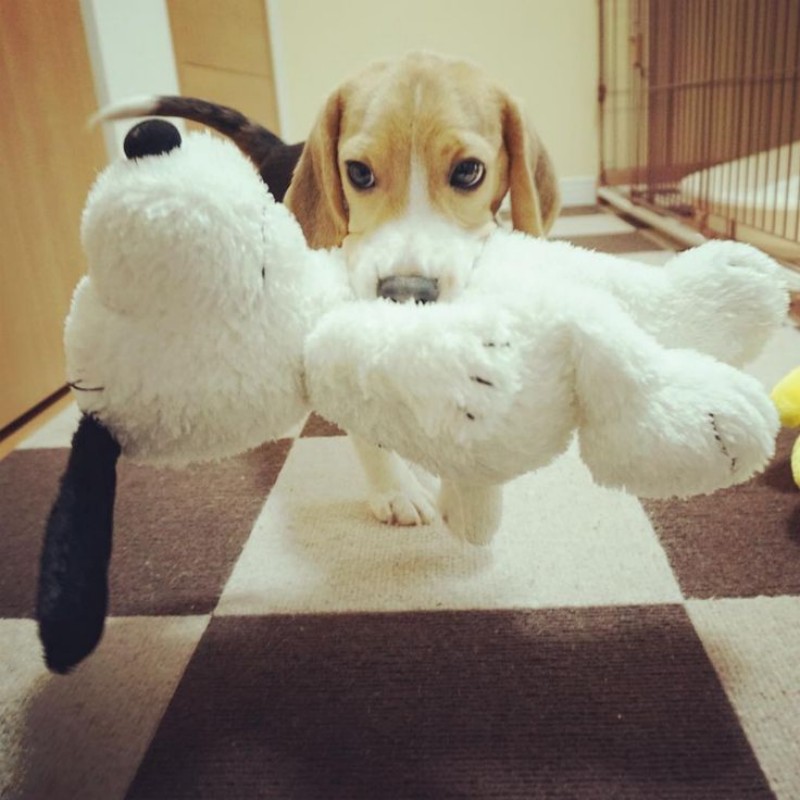
Top Features to Look for in Puppies’ Home Toys
When it comes to choosing the perfect home toy for your furry friend, there are several key features you should consider to ensure both their enjoyment and safety. Here’s a breakdown of some top features to look for in puppies’ home toys:
DurabilityA toy’s durability is crucial, especially for puppies who are in the teething phase or have a knack for destructive play. Opt for toys made from sturdy materials like heavy-duty rubber or reinforced fabric that can withstand chewing and gnawing. The last thing you want is for a toy to break apart and pose a choking hazard.
Size and ProportionsThe size of the toy should be appropriate for your puppy’s breed and size. It should be big enough that they can’t swallow it, but small enough to be engaging. Toys that are too large may not fit comfortably in their mouth, while those that are too small can easily be ingested. Consider the toy’s proportions to ensure it’s suitable for your puppy’s play style.
Non-Toxic MaterialsWith puppies being curious and often putting things in their mouths, it’s essential to choose toys made from non-toxic materials. Look for toys that are free from harmful chemicals such as BPA, phthalates, and lead. You can often find this information on the toy’s packaging or by contacting the manufacturer.
Interactive ElementsInteractive toys are not only fun for puppies but also help in their mental development. Look for toys with squeakers, crinkly sounds, or moving parts that stimulate your puppy’s senses and encourage play. These types of toys can also be great for training and teaching your puppy new tricks.
Chew-Proof EdgesPuppies have sharp little teeth that can easily damage toys with sharp edges. To prevent injury, choose toys with rounded or padded edges that are chew-proof. This not only protects your puppy but also extends the life of the toy.
Variety of TexturesDifferent textures can cater to a puppy’s various needs and preferences. Some puppies might enjoy a rough, bumpy texture to help with teething, while others might prefer a smooth, plush surface. Offering a range of textures can keep your puppy interested and challenged.
Ergonomic DesignToys that are designed with an ergonomic shape can be more comfortable for your puppy to hold and manipulate. Think about toys with handles or loops that allow them to grip and carry their toys easily, promoting their natural instinct to fetch and retrieve.
Easy to CleanA good home toy should be easy to clean. Look for toys that can be machine-washed or are dishwasher-safe, as this makes it simple to maintain hygiene and remove any dirt or bacteria. Toys that can be cleaned regularly help prevent the growth of mold and mildew, which can be harmful to your puppy.
Safety FeaturesAlways check for any safety features, such as reinforced stitching, that prevent the toy from coming apart. If the toy has any batteries, ensure they are securely contained and replaceable. It’s also important to check for any small parts that could come loose and be a choking hazard.
VersatilityA versatile toy can be used for a variety of activities, such as tug-of-war, hide-and-seek, or even as a comfort item for your puppy. Look for toys that can be easily manipulated for different types of play, which will keep your puppy entertained for longer periods.
Quality ConstructionUltimately, the quality of the construction is what will determine how long a toy will last. Look for toys that have sturdy stitching, strong seams, and durable fasteners. A well-made toy will not only withstand your puppy’s play but also provide you with peace of mind.
By considering these top features, you can find a home toy that will not only bring joy to your puppy but also contribute to their overall health and well-being. Remember, the right toy can be a valuable tool in your puppy’s development, from physical exercise to mental stimulation.
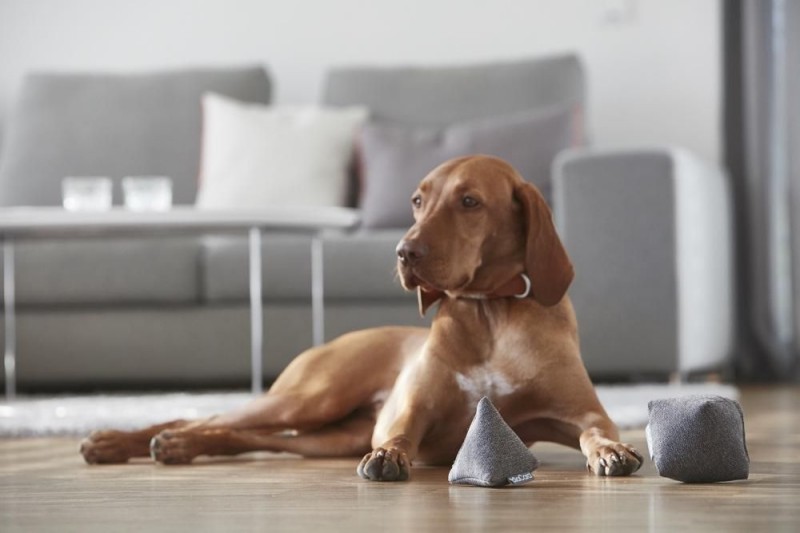
Our Top Picks: The Best Puppies Home Toys on the Market
When it comes to selecting the perfect home toys for your playful puppies, it’s essential to find items that not only entertain but also promote healthy development. Here’s a rundown of our top picks for the best puppies home toys on the market, each offering unique benefits for your furry friends.
-
Interactive Treat Dispensers: These clever toys are designed to keep your puppy engaged while also rewarding them with treats. With a variety of shapes and sizes, they encourage problem-solving skills as your pup figures out how to get the snacks out.
-
Plush Toys with Removable Parts: Plush toys with detachable parts are great for teething puppies. They can gnaw on the fabric and the squeaker-filled parts without risking swallowing any small pieces. Plus, the removable parts can be easily replaced when they start to show wear and tear.
-
Rubber and Plush Tug Toys: A classic choice for puppies, these toys provide a satisfying chew and a fun game of tug-of-war. Look for ones with durable rubber cores and soft plush covers that are gentle on your puppy’s teeth and gums.
-
Fishing Rod Style Toys: These toys mimic the natural hunting instincts of puppies. They come with a variety of “fish” that can be “caught” and pulled back. This type of play helps stimulate your puppy’s hunting instincts and provides mental stimulation.
-
Interactive Chew Toys: For puppies who need a bit of extra chewing gratification, interactive chew toys are a must. They often have multiple textures and can be filled with treats or kibble to keep your pup occupied for hours.
-
Nylon Bristle Brush Toys: These toys are perfect for cleaning your puppy’s teeth while they play. The bristles help to remove tartar and stimulate the gums, promoting oral health. They come in different sizes to fit your puppy’s mouth comfortably.
-
Hide and Seek Toys: Puppies love to play hide and seek. Toys that can be hidden or used to create a game of hide and seek are excellent for mental stimulation. They can be placed in a box or under a blanket, encouraging your pup to use their senses to find them.
-
Doggy Gyms and Obstacle Courses: These toys are not just for fun; they also help to develop your puppy’s physical skills. A doggy gym or obstacle course can provide a full-body workout, improving coordination and balance.
-
Squeaky Toys with Different Noises: Puppies are drawn to sounds, and squeaky toys are a hit. Look for ones with different sounds to keep your puppy’s interest piqued. These toys can also be used for training, as they often distract puppies during commands.
-
Collapsible Playpens: While not a toy per se, a collapsible playpen can provide a safe and fun area for your puppy to play. It’s perfect for giving them their own space to explore and play with their toys without the risk of getting into trouble around the house.
Each of these toys is designed to cater to different aspects of your puppy’s development, from physical exercise to mental stimulation. When choosing the best home toy for your furry companion, consider their size, energy level, and play style. A well-chosen toy can be a delightful part of your puppy’s daily routine, fostering a bond and ensuring they stay happy and healthy.

How to Choose the Right Size and Material for Your Pup
When selecting the perfect home toy for your furry friend, the size and material of the toy are crucial factors to consider. Here’s how to ensure you’re choosing the right fit for your pup’s playtime adventures:
-
Consider Your Pup’s Breed and Size: The size of your puppy’s toy should be proportional to their own size. Larger breeds may require bigger toys to keep them engaged, while smaller breeds will appreciate toys that are more their size. This ensures that the toy won’t be too overwhelming or too small for your pup to enjoy.
-
Take into Account Your Pup’s Strength and Play Style: If your puppy is a chewer, you’ll want to look for toys made from durable materials that can withstand their biting and tugging. Conversely, if your pup is more of a gentle nibbler, softer materials might be more appropriate. Understanding your pup’s play style can help you pick a toy that’s not only fun but also safe.
-
Look for Sturdy Construction: Toys that are well-constructed will last longer and are less likely to pose a risk to your pup. Check for,,。 A robust toy can withstand the rigors of play without falling apart, which could lead to small pieces being ingested.
-
Ensure the Toy is Appropriate for Your Pup’s Age: Puppies go through different developmental stages, and their play preferences can change as they grow. Toys designed for younger pups are often softer and more interactive, while toys for older pups might be more challenging and require more coordination. Choosing a toy that matches your pup’s age can help stimulate their cognitive and motor skills.
-
Consider the Toy’s Shape and Weight: The shape of a toy can greatly influence how it’s played with. Some shapes encourage more natural behaviors, like the shape of a ball that mimics fetching, while others are better for tugging or hiding. Additionally, the weight of the toy can affect how it’s carried and played with. A heavier toy might be more satisfying for a strong chewer, while a lighter toy might be better for a more delicate pup.
-
Evaluate the Material’s Safety: The material a toy is made from is vital. Look for toys made from non-toxic materials that are free from harmful chemicals. Natural materials like rubber, wood, and rope are often safer choices. If you’re unsure about a particular material, it’s always better to err on the side of caution and avoid it.
-
Check for Flammability and Heat Resistance: Toys that can withstand heat without melting or releasing harmful fumes are safer for both your pup and your home. A toy that might catch fire or melt in the heat can cause serious harm to your puppy and your property.
-
Think About Your Pup’s Health: If your pup has any specific health concerns, such as dental issues or joint problems, you’ll need to consider toys that are gentle on their teeth and joints. Soft rubber or rubber toys with a pliable texture can be easier on their gums and less stressful on their joints.
-
Durability Over Time: A good indicator of a toy’s durability is how long it’s been on the market. If a toy has stood the test of time and is still popular among pet owners, it’s likely to be a reliable choice for your pup.
-
Personalization: Lastly, consider what your pup enjoys most. Some dogs prefer toys that mimic the scent of their owner or have treats hidden inside. Personalizing the toy to your pup’s preferences can make it even more appealing.
Remember, the right size and material for your pup’s home toy can make a big difference in their playtime experience. By taking the time to select a toy that’s safe, durable, and tailored to your pup’s needs, you’re not just giving them something to play with; you’re giving them a companion that can grow with them through their playful stages.

Interactive Playtime: Engage Your Pup with Smart Designs
Incorporating interactive elements into your pup’s playtime isn’t just about keeping them entertained; it’s about stimulating their minds and encouraging healthy behavior. Smartly designed toys can make a significant difference in your dog’s development and happiness. Here’s how to engage your pup with toys that are as clever as they are fun.
Toys that challenge your dog’s problem-solving skills can be incredibly beneficial. Puzzle toys, for instance, encourage your pup to think and figure out how to get to the treats or toys hidden inside. This type of play can help prevent boredom and keep your pup’s mind sharp.
Consider a treat-dispensing toy that requires your dog to move parts or push buttons to release snacks. These toys can be great for mental stimulation and are also excellent for dogs that need a bit of extra exercise to burn off energy.
Dogs with a strong jaw or those that tend to chew on everything should be given toys that are made to withstand aggressive chewing. Look for durable materials like tough rubber or sturdy plastic that can stand up to their play. These toys can also be filled with treats to provide both a mental and physical challenge.
For puppies, especially those with a lot of energy, a teether or a toy with a textured surface can be a lifesaver. These items can help soothe sore gums during the teething process and provide a satisfying chew that doesn’t damage furniture or shoes.
A ball that bounces irregularly or one that lights up and makes sounds can add a new dimension to your pup’s playtime. These types of toys can spark your dog’s natural curiosity and keep them engaged for longer periods, as they try to figure out the toy’s unique behavior.
Many dogs love to play fetch, but not all balls are created equal. A durable, lightweight ball that won’t roll too far away is perfect for games of fetch that don’t require a lot of running. If your pup is a runner, consider a ball that has a distinctive sound or a bright color to make it easier to track.
For those moments when you need a little break but your dog doesn’t want to be left out, consider a remote-controlled toy. These can be a great way to interact with your pup even when you’re busy, and they often come with features that make them bounce, roll, or even change direction when they detect the presence of the dog.
Interactive toys that can be attached to a leash or worn by the dog can turn walks into a game. These can be especially useful for dogs that pull on the leash, as they can help keep them engaged and less focused on other distractions.
When it comes to smart designs, don’t forget about toys that can be customized or adjusted as your dog grows. Toys with replaceable parts or those that can be filled with different types of treats or toys can keep their interest for a longer period, as they can be changed up to keep things fresh.
For dogs that are visually stimulated, consider a toy with moving parts, lights, or patterns. These can capture your dog’s attention and provide a form of entertainment that doesn’t require a lot of physical activity.
Lastly, always keep in mind your dog’s individual preferences and needs. Some dogs may prefer toys that make noise, while others might be more interested in those that are silent. Observing your pup’s behavior can help you choose toys that are not only fun but also safe and appropriate for their specific play style.
Interactive playtime with smartly designed toys can be a wonderful bonding experience for you and your pup. By selecting toys that cater to your dog’s interests and developmental stage, you can ensure that playtime is not only enjoyable but also beneficial for your furry friend’s overall well-being.
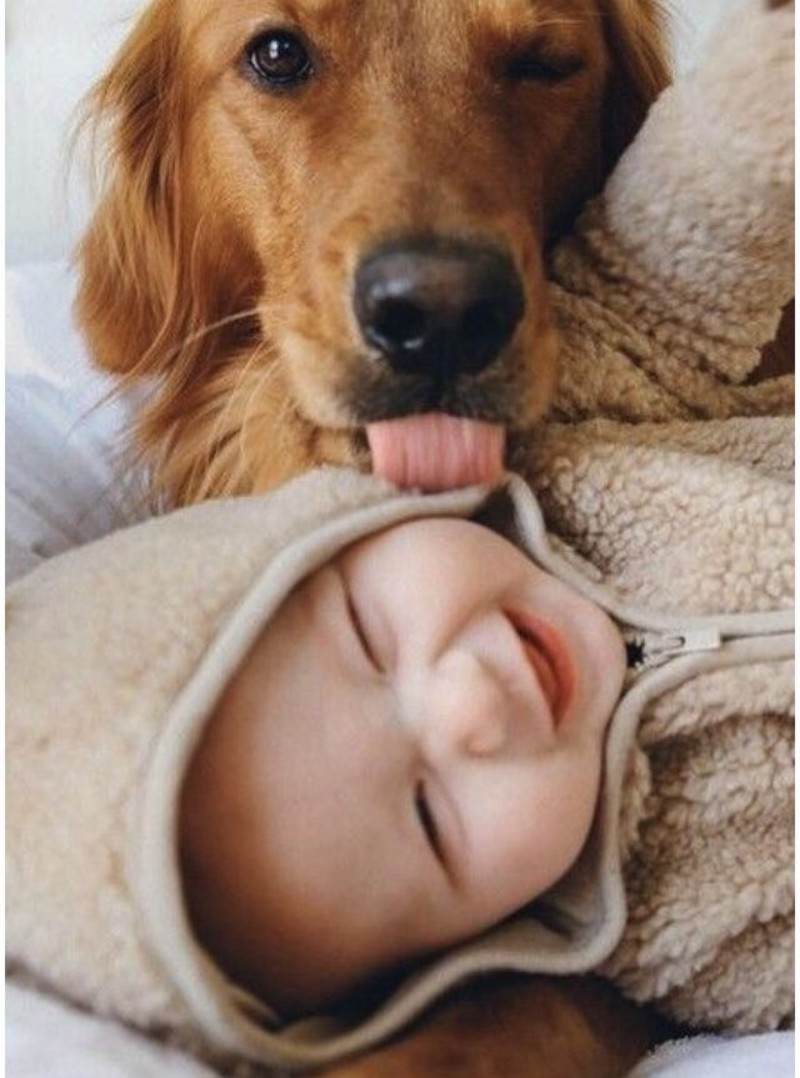
Maintaining Your Pup’s Home Toy: Tips for Longevity
Ensuring that your pup’s home toys remain in top condition for as long as possible is crucial for their continued enjoyment and safety. Here are some essential tips to help maintain your pup’s home toy and extend its lifespan:
Regular InspectionsKeep an eye on your pup’s toys regularly. Look for any signs of wear, such as frayed strings, loose parts, or cracks in the material. A small tear might seem harmless, but it can quickly become a bigger problem, potentially leading to pieces being ingested by your furry friend.
Cleaning RoutineEstablish a cleaning routine for your pup’s toys. While some toys can be machine washed, others may require hand washing. Check the care label for specific instructions. Regular cleaning not only keeps the toy hygienic but also helps to remove any dirt or debris that could cause wear and tear.
Drying ProperlyAfter cleaning, ensure that the toys are completely dry before allowing your pup to play with them again. Leaving toys damp can lead to mold growth, which is not only unpleasant but can also be harmful to your pup’s health. Air dry toys in a sunny spot or use a towel to absorb excess water.
Safe StorageStore toys in a designated area that is safe and secure. This prevents them from getting damaged or lost. Soft toys should be kept away from sharp objects or other toys that might puncture them. Hard toys should be stored in a dry place to avoid any moisture-related damage.
Avoid OveruseWhile it’s tempting to let your pup play with their favorite toy all the time, allowing for some down time can be beneficial. Overuse can lead to faster wear and tear. Rotating toys can help keep your pup interested and can also reduce the strain on any single toy.
SupervisionAlways supervise your pup when they are playing with their toys. This is especially important with plush toys, which can be easily torn apart or ingested. If a toy starts to break down, remove it from play immediately to prevent any accidents.
Material MattersThe choice of material for a toy can greatly impact its longevity. Durable materials like nylon, rubber, and heavy-duty fabric are more resistant to chewing and tearing. If your pup is a heavy chewer, opt for toys made from these materials.
Replacement ScheduleEven with proper care, toys will eventually need to be replaced. Set a schedule for checking the condition of your pup’s toys and plan for replacements when necessary. Regularly updating toys can also keep your pup engaged and interested in playtime.
Professional CleaningConsider professional cleaning for particularly sturdy or difficult-to-clean toys. Professional services can often restore toys to a like-new condition, extending their use even further.
Safe and Age-AppropriateEnsure that the toys are safe and age-appropriate for your pup. Younger puppies may need softer, more gentle toys, while older dogs might prefer toys that challenge their minds and provide dental benefits.
Eco-Friendly OptionsIf sustainability is a concern, look for toys made from eco-friendly materials. Some brands offer toys that are biodegradable or made from recycled materials, which is better for the environment and can also last a long time with proper care.
By following these tips, you can help ensure that your pup’s home toys remain in great condition, providing them with countless hours of fun and keeping them safe from potential hazards. Remember, the key to longevity is regular maintenance and supervision, combined with a thoughtful approach to the materials and design of the toys you choose.
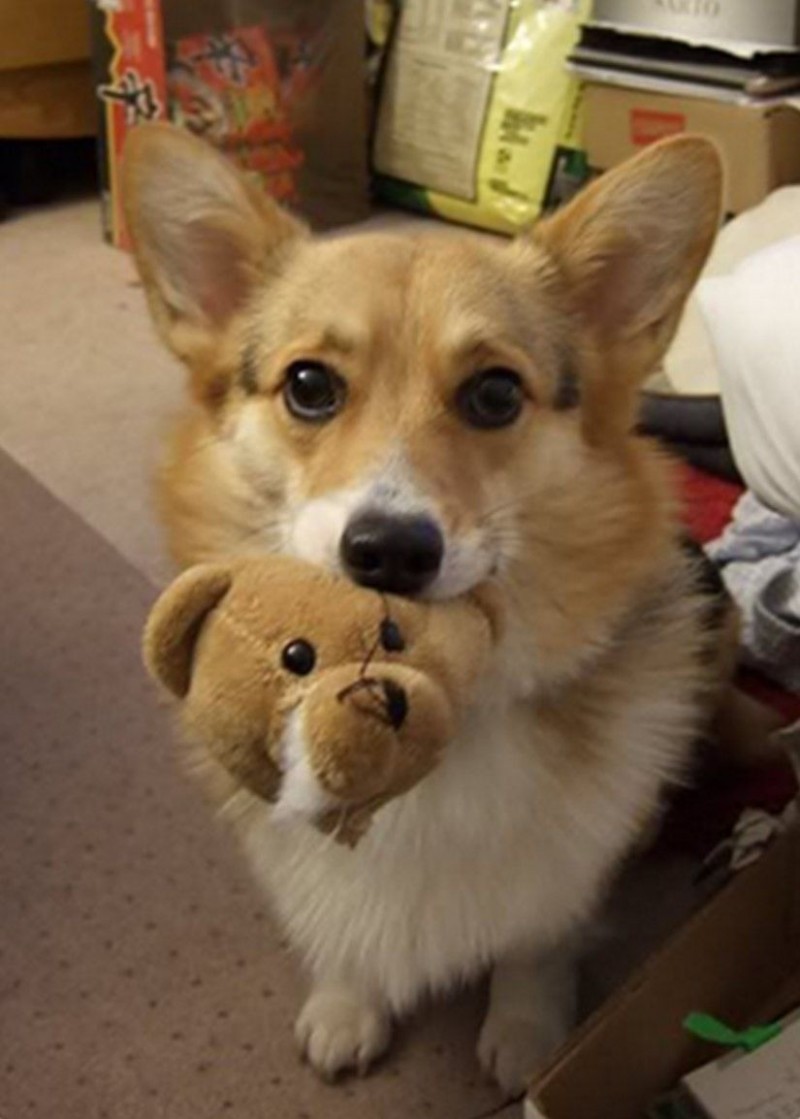
Customer Testimonials: What Other Pet Owners Are Saying
“Finding the perfect home toy for your puppy can be a delightful adventure, as these playful companions bring so much joy into our lives. From the thrill of the hunt to the comfort of a familiar scent, here’s a closer look at why puppies are drawn to home toys and the benefits they offer:
Puppies are natural explorers, constantly on the move and curious about everything around them. Home toys provide them with a safe and stimulating environment to explore their surroundings. These toys can mimic the sounds and textures of the outdoors, allowing your pup to engage in play without the risk of getting into trouble. The comfort and security that come with a familiar toy can help soothe your furry friend, especially during times of stress or anxiety.
One of the most significant benefits of home toys for puppies is the mental stimulation they provide. Chewing, carrying, and manipulating toys can help keep your puppy’s mind active and prevent boredom. Mental stimulation is crucial for a puppy’s development, as it encourages problem-solving skills and keeps their brain engaged. This can lead to a well-rounded and happy puppy that is less likely to engage in destructive behaviors.
Home toys also offer a fantastic opportunity for bonding between you and your pup. Playing together can create a strong emotional connection, as well as reinforce training and socialization skills. Interactive play can help teach your puppy about appropriate behavior, such as not biting or jumping, while also providing a fun and rewarding experience for both of you.
When selecting home toys for your puppy, it’s essential to consider a few key features to ensure your pup gets the most out of their playtime:
- Durability: Puppies are notorious for their powerful jaws and tendency to chew. Look for toys made from sturdy materials like natural rubber, rope, or heavy-duty fabrics that can withstand rigorous play sessions.
- Safety: Always prioritize safety, especially when it comes to small parts or toys with strings. Ensure that the toy is free of sharp edges, small pieces that can be swallowed, or toxic substances.
- Variety: Offer a range of toys with different textures, shapes, and sounds to keep your pup engaged. This variety can cater to different types of play, from chewing to carrying, and can help prevent your pup from getting bored with their toys.
- Size: Choose toys that are appropriately sized for your puppy. A toy that’s too large may not be engaging, while one that’s too small can be a choking hazard. The size should also allow for easy handling and manipulation.
- Interactive Elements: Toys with interactive elements, such as puzzles, treat dispensers, or squeakers, can provide additional mental stimulation and encourage your pup to use their senses.
Now, let’s dive into some of the best home toys on the market that have been loved by many:
- The KONG Classic: This timeless toy is a favorite among dogs of all ages. Its durable rubber construction makes it perfect for chewing, and it can be filled with treats or kibble to keep your pup entertained for hours.
- The Chuckit! Ultra Ball: A great toy for outdoor play, this ball is designed to float and is perfect for throwing games. It’s made from tough material that can withstand the wear and tear of play.
- The Busy Buddy Tug Toy: This toy is designed to be pulled, tugged, and chewed on, making it an excellent choice for a strong chewer. It’s also easy to clean and comes in various sizes to fit different breeds.
- The Nina Ottosson by Outward Hound Puzzle Toy: This interactive toy challenges your puppy’s problem-solving skills with different levels of difficulty. It’s made from non-toxic materials and is designed to be filled with treats.
Choosing the right size and material for your pup’s home toy is crucial for both their safety and enjoyment. Here are some tips to help you make the best choice:
- Size: Measure your puppy’s mouth, neck, and chest to ensure the toy fits comfortably. It should be large enough that your pup can’t swallow it but not so big that it becomes a tripping hazard.
- Material: Opt for materials that are non-toxic and safe for your pup to chew on. Natural rubber, nylon, and certain fabrics are generally considered safe. Avoid toys with parts that can easily break off or be ingested.
- Age and Breed: Consider your puppy’s age and breed when selecting a toy. Younger puppies may need smaller, gentler toys, while older or larger breeds might prefer larger, more robust options.
- Durability: A durable toy will last longer and provide more playtime. Look for toys that are made to withstand the test of time, even with aggressive chewers.
Interactive playtime is a fantastic way to engage your puppy and foster a strong bond between you. Smartly designed toys can take this engagement to the next level, offering both physical and mental stimulation:
- Squeaky Toys: These are classic for a reason—puppies love the sound and the hunt for the source of the noise. Look for toys with different sounds to keep things interesting.
- Treat-Dispensing Toys: These toys encourage your puppy to use their paws and nose to retrieve treats, which can be a fun way to reinforce training commands or teach new tricks.
- Puzzle Toys: These toys challenge your puppy’s problem-solving skills by requiring them to figure out how to access the treats or toys hidden within.
- Electronic Toys: Some interactive toys are equipped with lights, sounds, and movements that can really get your puppy’s tail wagging. These can be a great way to provide mental stimulation when you’re not home.
To ensure your puppy’s home toys last as long as possible, follow these maintenance tips:
- Regular Inspections: Check your puppy’s toys regularly for signs of wear and tear. Look for any loose threads, worn-out spots, or pieces that might be about to break off.
- Cleaning: Keep your toys clean to prevent the buildup of bacteria or mold. Depending on the type of toy, you can wash it by hand or in the washing machine. Always follow the manufacturer’s instructions.
- Storage: Store toys in a designated area that’s easy for your puppy to access but not constantly accessible. This can help prevent your pup from getting bored with their toys too quickly.
- Replacement: If a toy is beyond repair or poses a choking hazard, it’s best to replace it with a new one. Safety should always be your top priority.
Finally, it’s always heartwarming to hear about the experiences other pet owners have had with their furry friends and the toys they love. Here are some customer testimonials that showcase the positive impact of these home toys on pets and their owners:
- “My Golden Retriever loves his Chuckit! Ultra Ball. It’s the perfect size for her to carry and the perfect weight for me to throw. We have so much fun playing fetch together every day!”
- “I got the Busy Buddy Tug Toy for my German Shepherd, and it’s been a game-changer. He’s such a strong chewer, and this toy can withstand his aggressive chewing without getting damaged.”
- “The Nina Ottosson puzzle toy has been a hit with my puppy. It keeps him busy for hours, and I love that it’s helping him learn to think and problem-solve.”
- “My puppy was a chewer, and I was worried about what he might swallow. The KONG Classic has been a lifesaver. It’s durable, and I can stuff it with treats to keep him entertained and satisfied.”
These testimonials are a testament to the joy and functionality that well-chosen home toys can bring to the lives of both pets and their owners.”
